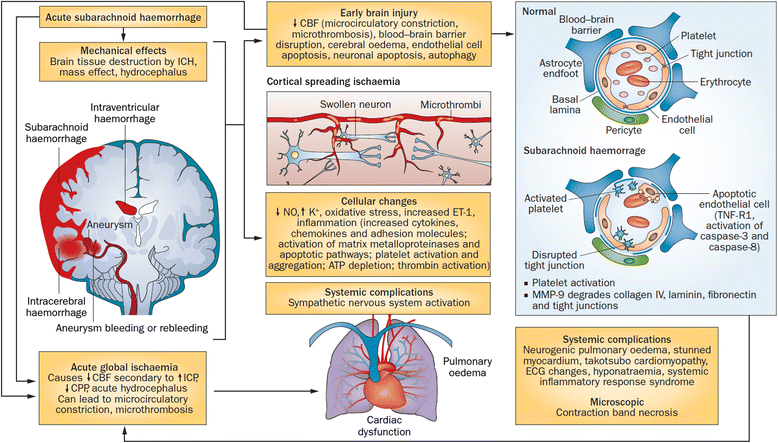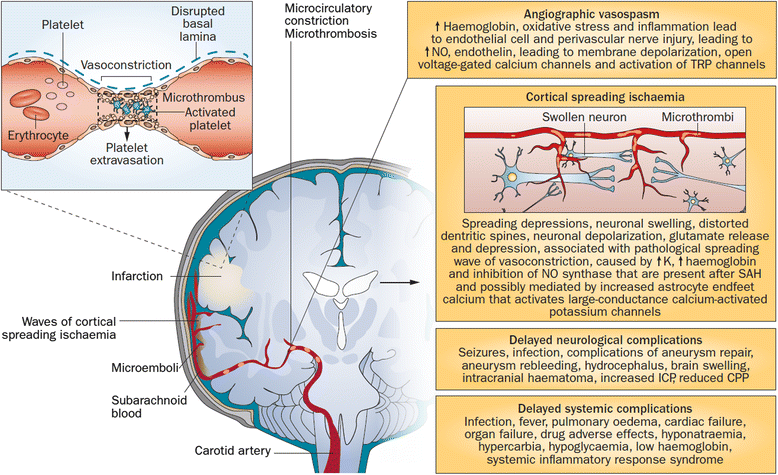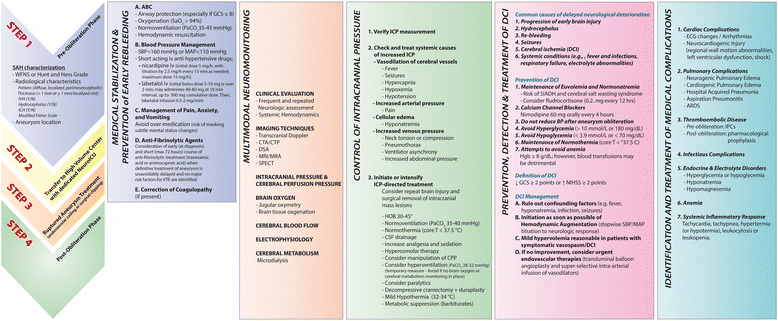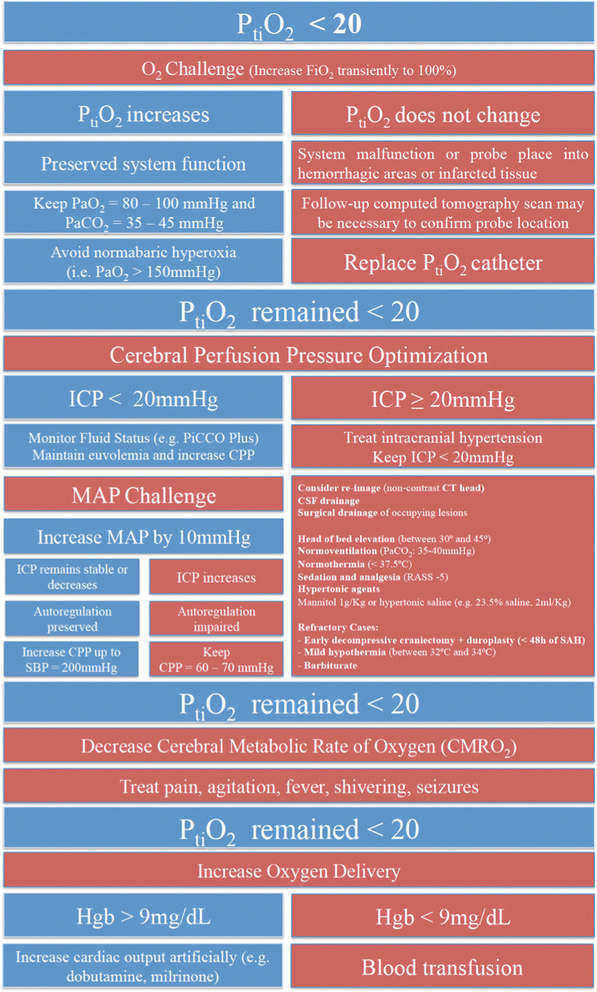The critical care management of poor-grade subarachnoid haemorrhage
- PMID: 26801901
- PMCID: PMC4724088
- DOI: 10.1186/s13054-016-1193-9
The critical care management of poor-grade subarachnoid haemorrhage
Abstract
Aneurysmal subarachnoid haemorrhage is a neurological syndrome with complex systemic complications. The rupture of an intracranial aneurysm leads to the acute extravasation of arterial blood under high pressure into the subarachnoid space and often into the brain parenchyma and ventricles. The haemorrhage triggers a cascade of complex events, which ultimately can result in early brain injury, delayed cerebral ischaemia, and systemic complications. Although patients with poor-grade subarachnoid haemorrhage (World Federation of Neurosurgical Societies 4 and 5) are at higher risk of early brain injury, delayed cerebral ischaemia, and systemic complications, the early and aggressive treatment of this patient population has decreased overall mortality from more than 50% to 35% in the last four decades. These management strategies include (1) transfer to a high-volume centre, (2) neurological and systemic support in a dedicated neurological intensive care unit, (3) early aneurysm repair, (4) use of multimodal neuromonitoring, (5) control of intracranial pressure and the optimisation of cerebral oxygen delivery, (6) prevention and treatment of medical complications, and (7) prevention, monitoring, and aggressive treatment of delayed cerebral ischaemia. The aim of this article is to provide a summary of critical care management strategies applied to the subarachnoid haemorrhage population, especially for patients in poor neurological condition, on the basis of the modern concepts of early brain injury and delayed cerebral ischaemia.
Figures




References
-
- Drake CG. Report of World Federation of Neurological Surgeons Committee on a Universal Subarachnoid Hemorrhage Grading Scale. J Neurosurg. 1988;68:985–6. - PubMed
Publication types
MeSH terms
LinkOut - more resources
Full Text Sources
Other Literature Sources

